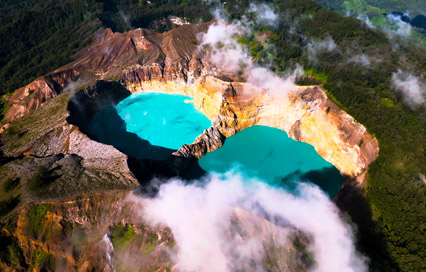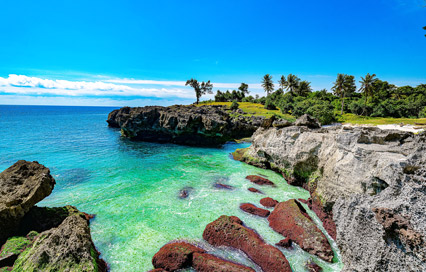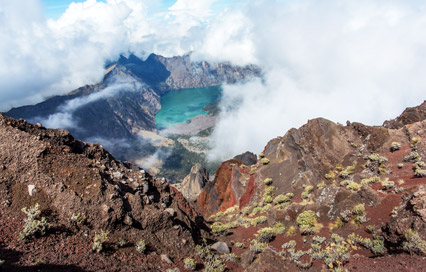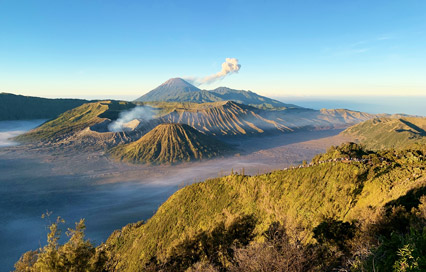Bandung Art Deco Walk: Braga Street Facades and Heritage Cafes
September 12, 2025
Bandung holds a secret that most travelers miss – it’s home to one of Southeast Asia’s most remarkable collections of Art Deco architecture. Walking down Braga Street feels like stepping back into the 1920s when this Indonesian city earned its nickname "Paris of Java." The elegant facades and heritage cafes tell stories of a glamorous past that still captivates visitors today.

Bandung
The Glory Days of Bandung Art Deco
Bandung's Art Deco legacy began in the 1920s when Dutch colonial authorities planned to move Indonesia's capital from Batavia to this mountain city. European architects working in the Dutch East Indies found creative freedom and exceptional craftsmanship in Bandung, found creative freedom and exceptional craftsmanship in Bandung. The result was a building boom that created one of Asia's most significant collections of Art Deco architecture.
The movement reached its peak between 1920 and 1940, transforming Bandung into a sophisticated colonial city. While many original Art Deco buildings remain, only a portion still retains their authentic architectural details. Bandung is often regarded among the leading cities in Asia for its outstanding Art Deco heritage.
Why Bandung became Art Deco central:
- Dutch colonial wealth funded ambitious building projects
- European architects brought cutting-edge design concepts
- Local craftsmanship adapted European styles to tropical conditions
- The planned capital relocation attracted major investment
Walking through Bandung today, you can still sense the optimism and modernity that defined this remarkable architectural period.

Braga Street's Architectural
Braga Street's Architectural Treasures
Braga Street stretches 700-800 meters through Bandung's historic heart, showcasing the finest examples of tropical Art Deco design. This pedestrian-friendly boulevard rewards careful observation - the real beauty lies in the building details above street level.
Start your walk at the southern entrance near Gedung Merdeka. This Independence Building, originally called Societeit Concordia, hosted wealthy colonials in an exclusive clubhouse built in 1895. Dutch architects Van Galen Last and C.P. Wolff Schoemaker redesigned it in 1926, creating the venue that would later host the famous 1955 Asian-African Conference.
The most striking building sits at Braga's southeast corner - the former DENIS Bank, now Bank Jabar. Dutch architect A.F. Aalbers designed this eight-story masterpiece in 1936, featuring distinctive wave-like curves that flow along the horizontal facade. The building perfectly demonstrates "Streamlined Deco" style with its rounded corners and modernist interior.
Notable Art Deco buildings on Braga Street:
- Gedung Merdeka: 1895 original, 1926 Art Deco renovation
- Former DENIS Bank: 1936 wave-style facade by Aalbers
- Majestic Cinema: 1925 design featuring Javanese mythology elements
- Various shophouses: 1920s-1930s commercial Art Deco styles
Each building tells part of Bandung's story, from colonial wealth to Indonesian independence.

European-style cafes - Braga Street's cafe culture
Heritage Cafes and Colonial Atmosphere
Braga Street's cafe culture reflects its sophisticated past. During the 1920s and 1930s, this was where Bandung's elite gathered to see and be seen. European-style cafes, restaurants, and boutiques lined the street, creating an atmosphere so refined that locals called Bandung the "Paris of Java".
Today's heritage cafes occupy many original Art Deco buildings, preserving both architectural details and cultural atmosphere. These establishments serve as living museums where you can experience 1920s glamour while enjoying modern Indonesian coffee culture.
Must-visit heritage cafes:
- Historic colonial cafes: Original Art Deco interiors preserved
- Modern interpretations: New cafes in vintage buildings
- Rooftop terraces: Views of surrounding Art Deco skyline
- Traditional coffee shops: Local styles in heritage settings
The coffee itself deserves attention - Bandung's highland location produces excellent beans that European colonials first cultivated in the surrounding mountains.
Exploring Beyond the Main Street
While Braga Street contains the concentration of Bandung Art Deco, neighboring areas reveal additional architectural gems. A short walk east brings you to Gedung Sate, the iconic government building completed in 1920 with its distinctive spear-like antenna that gives the building its "satay" nickname.
The Savoy Homann Hotel, just blocks from Braga Street, showcases A.F. Aalbers' signature style with horizontal balconies and curved canopies. This hotel has hosted guests continuously since the colonial era, maintaining much of its original Art Deco character.
Building | Year | Architect | Style Features |
Gedung Sate | 1920 | J. Gerber | Neo-classical with native elements |
Villa Isola | 1933 | Schoemaker | Curved forms with terraced gardens |
St. Peter Cathedral | 1930s | Schoemaker | Neo-Gothic Art Deco fusion |
These buildings demonstrate how Bandung's Art Deco architects adapted European styles to Indonesian climate and culture, creating a unique tropical modernism.
Photography and Walking Tour Tips
The best light for photographing Braga Street's facades occurs during golden hour, roughly 5:00-6:30 PM. The warm afternoon light enhances the curved details and geometric patterns that define Art Deco style.
Start your walk in the morning when cafes open and the street awakens. This timing allows you to experience both architectural details and local daily life. Many buildings look dramatically different as shadows shift throughout the day.
Photography essentials:
- Look up: The most impressive details are above eye level
- Focus on curves: Art Deco emphasizes flowing, geometric lines
- Capture contrasts: Old architecture with modern street life
- Document details: Decorative elements tell individual stories
Don't forget to step inside buildings when possible. Many retain original Art Deco interiors, from floor tiles to ceiling designs.
The Cultural Context of Art Deco Bandung
Understanding Bandung's Art Deco requires appreciating its cultural context. This wasn't simply European architecture transplanted to Indonesia - it represented a unique fusion of Western modernism with tropical conditions and local craftsmanship.
Architects like C.P. Wolff Schoemaker, who taught at Bandung Institute of Technology, trained local architects including future Indonesian President Sukarno. This knowledge transfer created lasting impact beyond individual buildings.
The Art Deco period coincided with Indonesian nationalism's growth. Many buildings later gained historical significance - Gedung Merdeka hosted the Asian-African Conference that launched the Non-Aligned Movement, transforming a colonial clubhouse into a symbol of post-colonial solidarity.
Cultural significance:
- Architectural education: European architects trained Indonesian students
- Political transformation: Colonial buildings became independence symbols
- Economic development: Coffee and quinine wealth funded construction
- Social change: Public spaces reflected evolving Indonesian society
This layered history makes Braga Street more than an architectural museum - it's a pathway through Indonesia's complex colonial and post-colonial experience.
Planning Your Art Deco Walk
Allow at least 3-4 hours for a thorough Braga Street exploration, including cafe stops and building photography. The street is entirely walkable, but comfortable shoes help navigate occasional uneven colonial-era paving.
Best visiting times:
- Morning (8:00-11:00 AM): Excellent light, fewer crowds
- Late afternoon (4:00-7:00 PM): Golden hour photography, active street life
- Weekdays: Quieter for architectural photography
- Weekends: More vibrant cafe culture and local activity
Transportation to Braga Street:
- From station: 10-minute walk from Bandung railway station
- By taxi: Drop-off at Asia-Afrika Street intersection
- Public transport: Multiple angkot routes serve the area
- Parking: Limited street parking, use nearby commercial lots
What's the best starting point for a Braga Street Art Deco walk?
Begin at the southern entrance near Gedung Merdeka (Independence Building) at the Asia-Afrika Street intersection. This provides historical context and lets you walk north through increasingly diverse architectural styles, ending at the city council building.
Are the Art Deco buildings still in original condition?
About 50% of Braga Street's Art Deco buildings retain their original architecture, though many have been adapted for modern use. The exteriors are generally well-preserved, while interiors vary - some maintain original features while others have been modernized for contemporary businesses.
Can you enter the historic Art Deco buildings?
Many buildings are accessible as they house cafes, shops, banks, or museums. Gedung Merdeka operates as the Asian-African Conference Museum, while several heritage cafes occupy original Art Deco structures. However, some buildings serve as offices with restricted access.
Bandung's Art Deco heritage offers travelers a unique glimpse into Indonesia's colonial past and architectural innovation. Walking Braga Street reveals how European modernism adapted to tropical conditions, creating a distinctive style that influenced Southeast Asian architecture for decades.
Discover Indonesia's Cultural Heritage with GVC
Exploring Bandung's remarkable Art Deco architecture and heritage cafes provides an unforgettable journey through Indonesia's rich colonial history and architectural innovation. As you plan your visit to experience the "Paris of Java" and its unique tropical Art Deco buildings, ensuring proper documentation for your Indonesian adventure becomes essential for a smooth travel experience.
GVC offers comprehensive visa services that streamline your entry requirements, allowing you to focus on discovering hidden architectural gems like Braga Street's stunning facades and historic cafes. Whether you're planning an extended cultural exploration of Indonesia's cities or a focused architectural tour of Bandung, expert visa assistance ensures you meet all travel requirements without complications that could interrupt your heritage discovery.
The visa application process becomes straightforward with GVC's professional guidance, offering transparent pricing structures and reliable support throughout your documentation journey. Many travelers appreciate the convenience of secure online payment processing, which simplifies the entire application experience and provides peace of mind as your travel dates approach. With Indonesia's diverse cultural attractions and architectural treasures waiting to be explored, professional visa services let you concentrate on planning your perfect itinerary while experts handle the administrative details efficiently.
Related Articles:
• Best Things To Do In Indonesia Makes You Want To Visit Again
• Best Places To Visit In Indonesia For Your Travel Bucket List
• Indonesias World Heritage Sites A Guide To Its Unesco Treasures
• Discover The Best Time To Visit Indonesia A Complete Guide For Travelers
• Discovering Bahrains Culture And Lifestyle An Arabs Paradise Guide
• Indonesian National Holidays A Celebration Of Diversity And Culture
Tags




